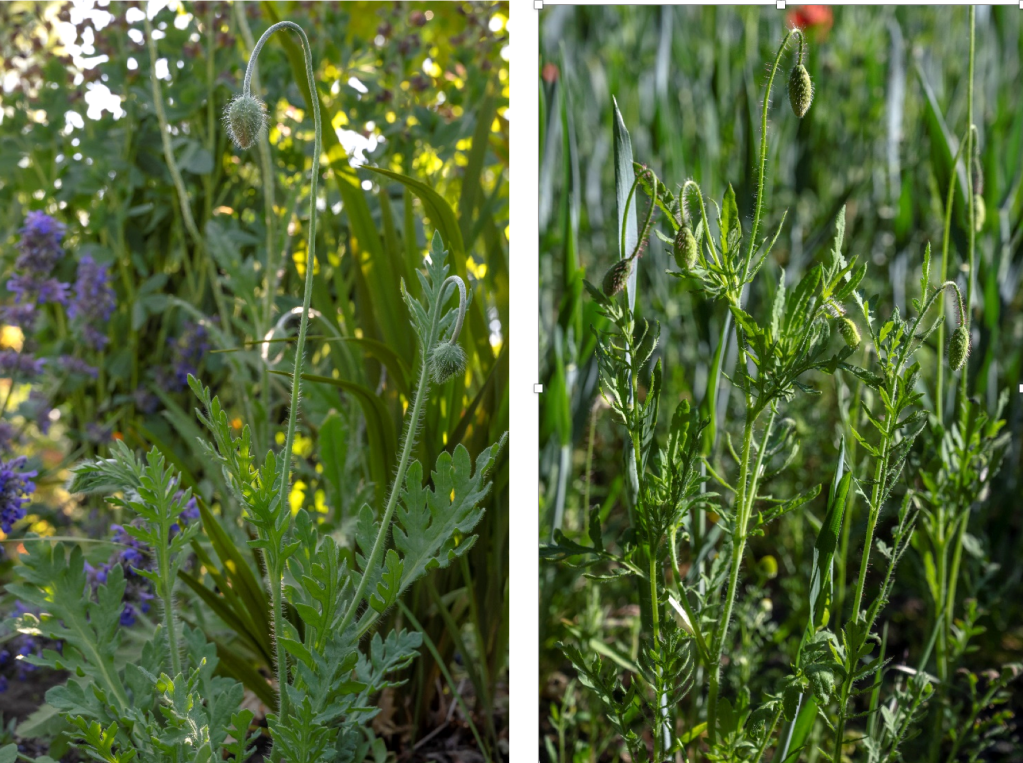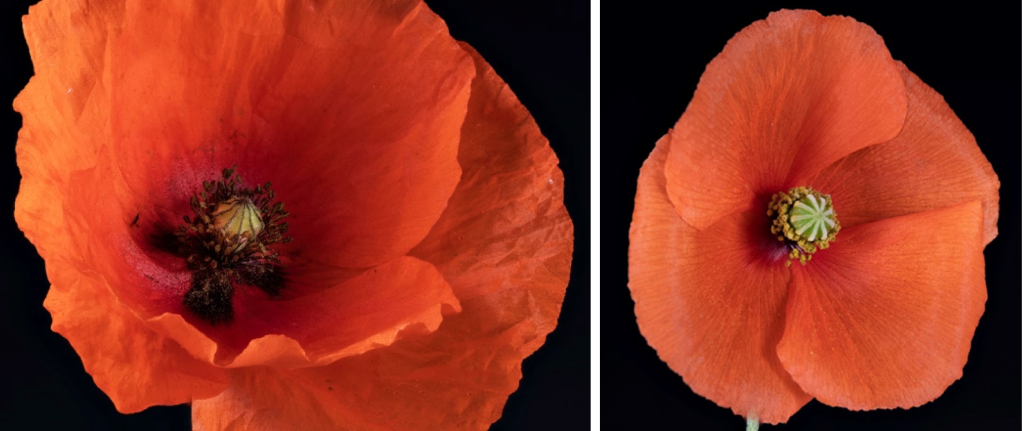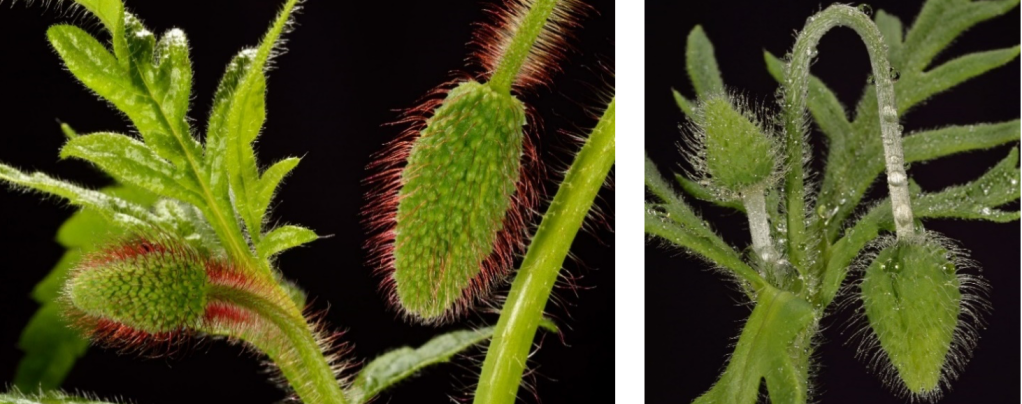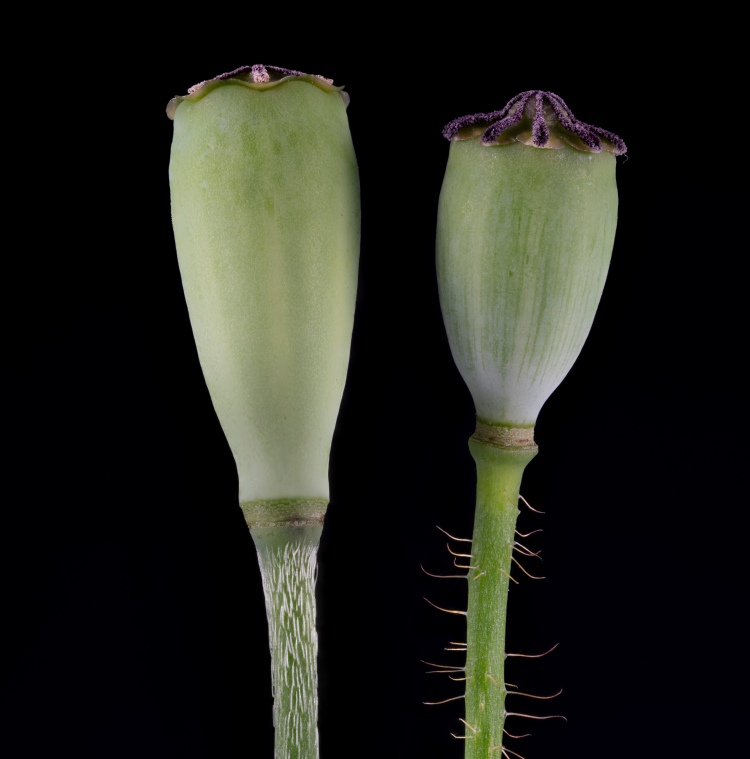
There are two common red poppies in our area that at first glance look very similar. They are the common or corn poppy, Papaver rhoeas and the long-headed poppy, Papaver dubium. Both are highly variable, erect annuals that grow to about 60cm, and the flower characters overlap considerably. So how can you tell them apart?

The leaves of P. dubium (left, above) are a more glaucous, bluish-green with broader lobes, than the corn poppy, P. rhoeas (above, right) which has brighter green leaves with narrower lobes. So they can be distinguished even as young plants before there are any flowers.
The flowers of P. rhoeas (below left) are generally a strong, saturated red, often darkening towards the base to form a black or deep purple cross. Those of P.dubium (below right) are usually a little smaller, paler and more orange in colour and tend to have a smaller black or purple mark at the base. In P. rhoeas the stigma rays are usually purple, while in P. dubium they are yellow, but yellow stigmas may also occur sometimes in P. rhoeas, which may also lack the black cross,so none of these characters is definitive.

A reliable distinction is that the flower stalks or pedicels of Papaver rhoeas (below left) have patent hairs that stick out from the flower stalk almost at right angles, whereas those of P. dubium (below right) are appressed, lying parallel against the stem, particularly toward the top of the flower stalk. Close to the capsule the hairs of P. rhoeas may be red-pigmented, rarely so in P. dubium.

As its name suggests, the long-headed poppy (P. dubium, below left) has a seed capsule that is longer than it is wide, tapering just slightly to the rayed stigma while the corn poppy (P. rhoeas, below right) has a shorter capsule, about as long as it is wide at maturity, the stigma almost the same width.

In summary, the two most reliable field characters distinguishing these two species are the shape of the seed capsule – much longer in P. dubium and more nearly round at maturity in P. rhoeas – and the stiff hairs close to the flower head that are patent in P. rhoeas, sticking out at right angles, and appressed in P. dubium, lying flat against the flower stalk.
Chris Jeffree
all images © Chris Jeffree
Great photos and clear description of the differences. Thank you for this.
LikeLiked by 1 person